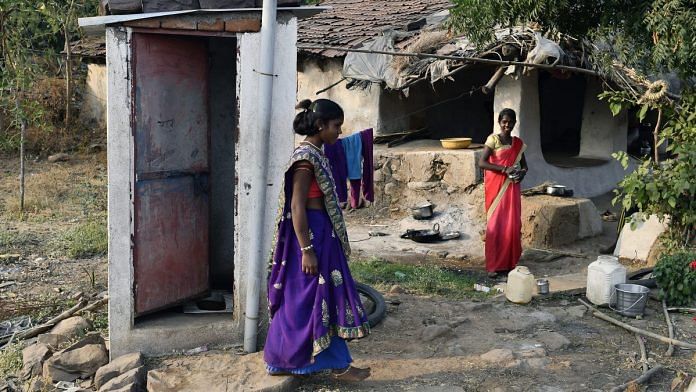New Delhi: A study has found that households with female children don’t practice open defecation as much as others, owing to a potentially high cost of harassment.
These findings have come to light in an article titled Gender composition of children and sanitation behaviour by Deepak Saraswat, a PhD student at the University of Connecticut, published on the Ideas for India portal on 22 April 2020. He used data from the 2015-16 Demographic and Health Survey and found that the presence of a female child in Indian households leads in a reduction in open defecation amounting to 7 per cent in rural areas and 14 per cent in urban areas.
Saraswat noted that rural and urban regions differed in their costs and incentives to reduce open defecation. In contrast to urban areas, rural areas have large spaces, which provides greater privacy while defecating in the open, whereas in urban areas, defecating in the open came with higher social costs like spreading “impurity” in the neighbourhood.
Also read: Declaring India ODF doesn’t mean much if there is no cross-verification with big data
‘Income constraint in rural areas for investing in a toilet’
Saraswat wrote, “My calculation using DHS (Demographic and Health Survey) shows that while OD (open defecation) demonstrates a sharp reduction in urban areas as income goes up, the reduction in rural areas is much less with income going up.” Moreover, he says, it may be expected that in urban areas, the households likely to be “compliers” are the ones that witness higher rates of open defecation. However, in rural areas, there is an income constraint for investing in a toilet, so the compliers are likely to be from richer households. This has been empirically confirmed in the study.
A reduction in open defecation owing to a firstborn child being a girl is far greater in poor urban households than richer ones. Results have also suggested that this reduction “shows up” when the girl child reaches the age of puberty. Moreover, in rural areas, this reduction is more pronounced when the girls are close to marriageable age. He adds, “the reduction in OD from main results are largely driven by areas where the crime against women is the highest in the country.”
Saraswat argues that “this paper highlights that in certain cases, there are private costs from open defecation and hence, private investment is possible.”
“Association between the gender of the firstborn child and sanitation practices of a household in India also provides a new first-stage result, which has the potential to generate higher take-ups with targeted incentives to families with presence of girl child,” he added.
According to Saraswat’s research, India accounts for 60 per cent of the total open defecation in the world.
Also read: Most crucial on Swachh Bharat agenda next is to sustain the momentum: Parameswaran Iyer




It’s astonishing that this is still a thing after more than 300 years of colonization.